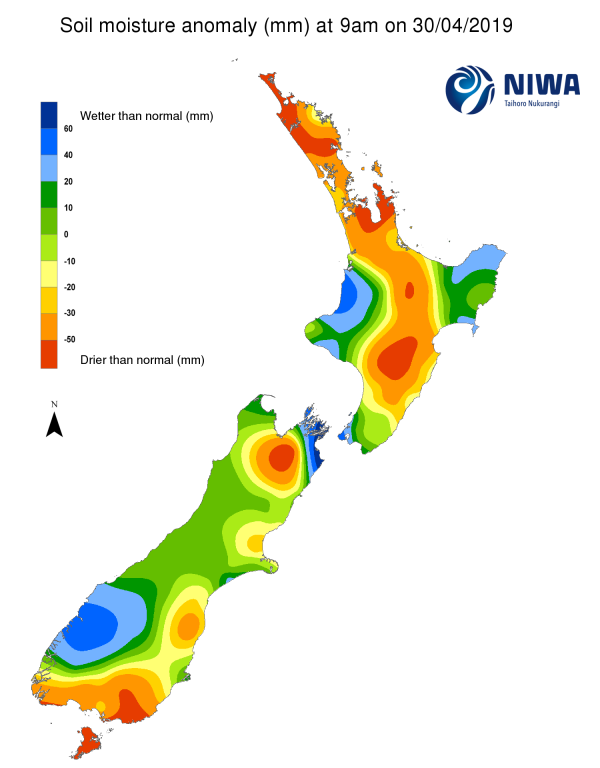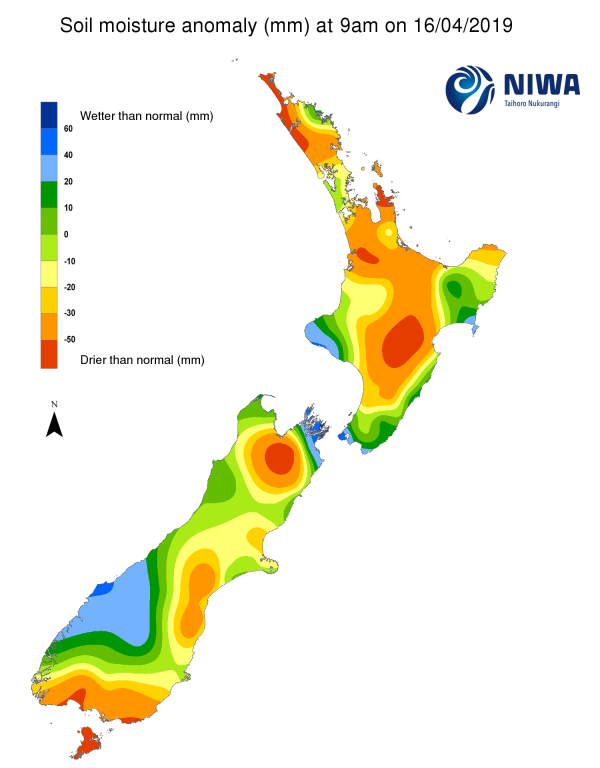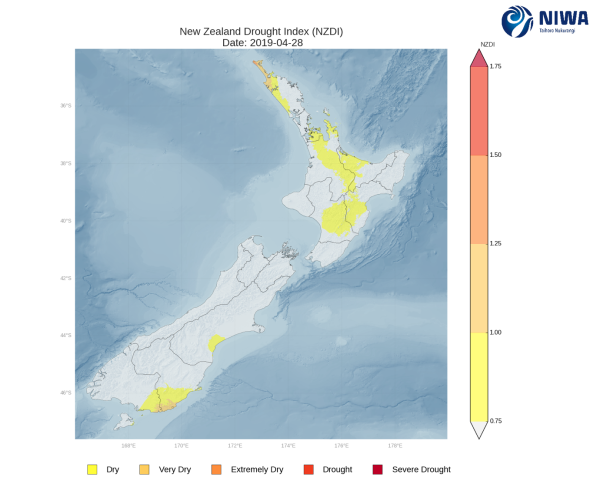A weekly update describing soil moisture across the country to help assess whether severely to extremely dry conditions are occurring or imminent. Regions experiencing these soil moisture deficits are deemed “hotspots”. Persistent hotspot regions have the potential to develop into drought.
Facts: Soil Moisture
Across the North Island, soil moisture levels generally did not change significantly in the past week. Moderate increases were observed in Gisborne and East Cape, with minor increases occurring in western Waikato. Meanwhile, soil moisture levels decreased slightly in Northland, Auckland, and northern Waikato. The driest soils across the North Island compared to normal for this time of the year are found in the Far North, Coromandel Peninsula, interior Manawatu-Whanganui and interior Hawkes Bay, while the wettest soils for this time of the year are located in western Waikato and Wellington City.
Hotspots in the North Island are currently found in Aupouri Peninsula, interior Manawatu-Whanganui, and interior Hawke’s Bay.
In the South Island, only subtle soil moisture changes were observed in the past week. Minor increases occurred in coastal Marlborough, lower Westland, and central Canterbury. The driest soils across the South Island compared to normal for this time of the year are found in interior Marlborough, coastal Southland, and Stewart Island, while the wettest soils for this time of the year are found in the Marlborough Sounds area.
South Island hotspots are currently found in interior Marlborough, a small area near Christchurch, coastal southern Canterbury, and a portion of Stewart Island.
Outlook and Soil Moisture
In the North Island, high pressure will be the dominant weather feature during the next week, leading to widespread meagre rainfall amounts. A few showers will continue to move onshore in Gisborne through to Thursday (2nd May), but total amounts will be less than 10 mm. Elsewhere in the North Island, little to no rainfall may occur in the next week. Rainfall totals, if any, would likely be less than 5 mm.
Due to the expected meagre rainfall in the next week, soil moisture levels will likely decrease nearly everywhere across the North Island, although evapotranspiration reduces significantly at this time of year due to generally cooler temperatures. This may result in strengthening and expansion of the current hotspots, with new hotspots possibly emerging in Auckland and northern Waikato.
In the South Island, high pressure will result in mostly dry weather during the next few days. A weak front moving across Southland on Thursday (2nd May) may produce around 5 mm. More significant rainfall is possible for the lower West Coast from late Saturday through to Monday as a front moves onshore. Some locations in Fiordland and lower Westland could receive around 100 mm from this event, with Southland, interior Otago, and southern Canterbury possibly seeing 20-40 mm of rainfall. However, little if any rainfall is expected during the next week for northern Canterbury and the top of the South Island.
Due to expected rainfall, at least some improvement in the soil moisture situation will be possible in the lower South Island during the next week. However, current hotspots near Christchurch and in interior Marlborough may expand and strengthen due to minimal rainfall.
Background:
Hotspot Watch: a weekly advisory service for New Zealand media. It provides soil moisture and precipitation measurements around the country to help assess whether extremely dry conditions are imminent.
Soil moisture deficit: the amount of water needed to bring the soil moisture content back to field capacity, which is the maximum amount of water the soil can hold.
Soil moisture anomaly: the difference between the historical normal soil moisture deficit (or surplus) for a given time of year and actual soil moisture deficits.
Definitions: “Extremely” and “severely” dry soils are based on a combination of the current soil moisture status and the difference from normal soil moisture (see soil moisture maps at https://www.niwa.co.nz/climate/nz-drought-monitor/droughtindicatormaps)
Hotspot: A hotspot is declared if soils are "severely drier than normal" which occurs when Soil Moisture Deficit (SMD) is less than -110 mm AND the Soil Moisture Anomaly is less than -20 mm.



